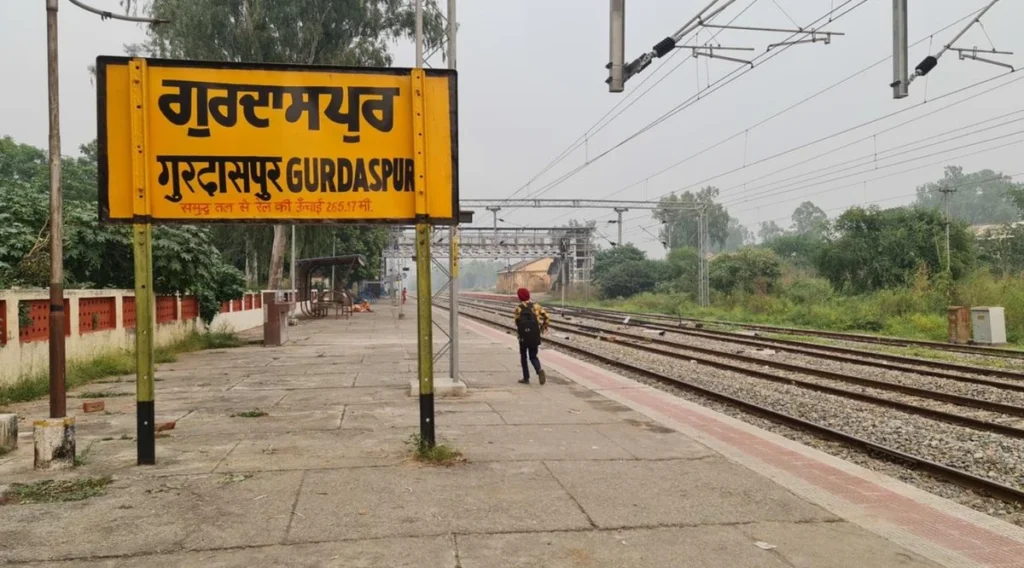Explore Gurdaspur, Punjab—rich in history, culture, and spirituality. Visit its sacred sites, scenic beauty, and vibrant heritage for an unforgettable experience!

Discover Gurdaspur: A Blend of Culture, History & Faith!
Nestled in the northwestern region of Punjab, India, Gurdaspur District stands as a testament to the rich cultural heritage, historical significance, and natural splendor of the region. With a history dating back centuries, this district is a captivating blend of tradition and modernity.
The district’s historical importance is underscored by its role in India’s struggle for independence. Gurdaspur played a pivotal role during the Partition of 1947, when it became a major transit point for those migrating between India and Pakistan. The legacy of that tumultuous period is evident in the numerous monuments and sites that dot the landscape, serving as reminders of the sacrifices made during that time.
The district is a mosaic of cultures, boasting a diverse population that encompasses Punjabis, Sikhs, Hindus, and Christians. This diversity is reflected in the local festivals, where celebrations such as Baisakhi, Diwali, and Christmas are observed with equal fervor. The Gurdwara Sri Darbar Sahib Kartarpur, situated in Dera Baba Nanak, is of particular significance to Sikhs, as it is closely associated with Guru Nanak Dev Ji, the founder of Sikhism.
For history enthusiasts, Gurdaspur offers an array of attractions. The Gurdaspur Fort, built during the Mughal era, stands as a symbol of the region’s architectural heritage. The Barath Sahib Gurudwara, another prominent site, holds historical importance due to its connection with Guru Hargobind Sahib. Additionally, the Shahpur Kandi Fort showcases a fusion of Mughal and Sikh architectural styles.
The district’s landscape is a blend of rivers, fertile fields, and picturesque hills. The Beas River meanders through Gurdaspur, not only providing sustenance to the agricultural lands but also offering opportunities for leisure activities like boating and picnicking. The Mukeshwar Temple, situated atop a hill, offers panoramic views of the surrounding countryside.
Agriculture is the backbone of Gurdaspur’s economy, with the fertile land yielding crops such as wheat, rice, sugarcane, and cotton. The district’s industries, particularly those related to textiles and manufacturing, also contribute significantly to its economic growth.
In recent years, Gurdaspur has embraced modernization while preserving its cultural roots. The district’s educational institutions are making strides in providing quality education, and its healthcare facilities are improving accessibility to medical services. The district’s connectivity has improved with better road networks, linking it to major cities like Amritsar and Pathankot.
Famous Places in Gurdaspur District
Gurdaspur District boasts an array of famous places that blend historical significance, cultural heritage, and natural beauty. Explore these notable destinations that make Gurdaspur a captivating region to visit:
Gurdwara Sri Darbar Sahib Kartarpur: Situated in Dera Baba Nanak, this gurdwara holds immense importance for Sikhs. It marks the place where Guru Nanak Dev Ji, the founder of Sikhism, spent the last years of his life. The Kartarpur Corridor has enhanced accessibility to this revered site.
Gurdaspur Fort: A historical gem dating back to the Mughal era, the Gurdaspur Fort stands as a testament to the region’s architectural legacy. Its impressive structure and intricate design are a sight to behold.
Barath Sahib Gurudwara: Linked with Guru Hargobind Sahib, the sixth Sikh guru, this gurdwara is a prominent religious site. The historical significance and serene ambiance attract devotees and history enthusiasts alike.
Shahpur Kandi Fort: A blend of Mughal and Sikh architectural styles, this fort is a window into the past. Overlooking the Ravi River, it offers panoramic views and a glimpse into the region’s history.
Mukeshwar Temple: Perched atop a hill, the Mukeshwar Temple provides breathtaking views of the surrounding landscape. The temple’s tranquility and scenic beauty make it a must-visit spot.
Beas River: The lifeline of the district, the Beas River not only nurtures the fertile lands but also offers recreational activities like boating and picnicking along its banks.
Akhnoor Fort: While technically located just outside the district in Jammu and Kashmir, this historic fort is easily accessible from Gurdaspur. It dates back to the 18th century and overlooks the Chenab River.
Dera Baba Nanak: This town is named after the saint Baba Nanak, and it’s where the Kartarpur Corridor starts. The corridor has made it easier for pilgrims to visit the Gurdwara Sri Darbar Sahib Kartarpur.
Ramakrishna Ashram: Founded by Swami Vivekananda’s disciple Swami Ramakrishnananda, this ashram offers a peaceful retreat and promotes spiritual and cultural activities.
Qadian: Known for its connection to the Ahmadiyya Muslim Community, Qadian has religious and historical significance. The tomb of Mirza Ghulam Ahmad, the founder of the community, is a prominent landmark.
These famous places in Gurdaspur District offer a glimpse into the region’s past, its spiritual diversity, and the picturesque landscapes that make it a destination worth exploring. Whether you’re a history enthusiast, a nature lover, or a spiritual seeker, Gurdaspur has something unique to offer at every turn.
Read More :-